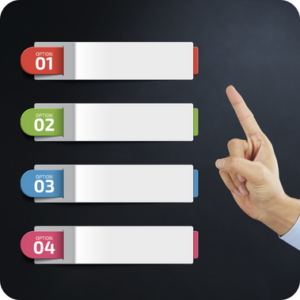Launching your Shopify store with a clear plan and a well-structured checklist saves you time and effort. It increases your chances of capturing your target audience’s attention, driving traffic, and generating sales from day one.
Starting a Shopify store is an exciting endeavour that allows you to realise your entrepreneurial dreams. However, launching a successful Shopify store requires careful planning, strategic execution, and attention to detail.
This checklist will provide the information and resources to confidently set up your Shopify store, optimise it for search engines, establish an appealing product catalogue, and design a solid marketing plan.
We’ll walk you through building a successful online store, from planning and customisation to testing and post-launch activities.
Let’s get started!
Shopify store launch checklist
Step 1: Planning your Shopify store launch
Preparing correctly before starting your Shopify business is vital to ensure success. The following are the main steps to consider:
1.1 Identify your audience and niche
Understanding your target demographic and speciality is critical to running a profitable online business. Take the following steps:
- Research and analyse the demographics of your target audience, such as age, gender, geography, and hobbies. This information will assist you in tailoring your goods and marketing efforts to their specific requirements.
- Explore the market for your store’s particular niche or area of concentration. You may separate yourself from the competition and appeal to a specialised audience with distinct demands by targeting a specific niche.
1.2 Carry out market research

- Analyse the landscape of your industry, including trends, market size, and development potential. This data can assist you in understanding the competitive landscape and identifying opportunities.
- Investigate your rivals’ product offers, pricing tactics, and marketing approaches. Determine how you can differentiate your shop and give customers distinct value.
- Participate in surveys, interviews, or social media engagements with your target audience. It will allow you to adapt your marketing to their preferences, pain spots, and purchasing habits.
1.3 Set specific goals and objectives
Setting specific goals and objectives is essential for tracking your progress and staying on track. Here’s how to do it efficiently:
- Set clear and quantifiable goals for the launch of your Shopify store, such as sales targets, internet traffic, or conversion rates. Check if these objectives are in line with your overall corporate vision.
- Set realistic deadlines for reaching your objectives. Divide them into reasonable milestones to track your progress and make any modifications.
- Consider qualitative objectives such as brand awareness, consumer involvement, or social media following. These objectives assist you in developing a solid brand presence and connecting with your target audience.
Tips:
- Make no assumptions about your intended audience. Conduct extensive research and collect real-world data to understand their requirements and preferences better.
- Consider quantitative data (such as market size and trends) and qualitative data (such as consumer comments and views) while doing market research.
- Maintain an awareness of market trends and develop technology to uncover new chances for your shop.
- Set SMART goals that are specific, measurable, attainable, relevant, and time-bound.
- Examine and adjust your goals regularly as your company grows and new possibilities exist.
Following these preparatory stages will provide a solid foundation for your Shopify store launch and better position you to attract and engage your target audience.
Step 2: Choosing and customising a Shopify theme
Choosing the correct Shopify theme and customising it to match your brand’s identity is critical for developing an appealing and user-friendly online store. The following are the main steps to consider:
2.1 Choosing a mobile-friendly and responsive theme
Prioritise responsiveness and mobile friendliness while selecting a Shopify theme. Take the following steps:
- Browse the Shopify Theme Store and sort themes by industry and aesthetic preferences.
- Search for themes that are responsive and mobile-friendly. These themes automatically adjust to changing screen sizes, giving a consistent user experience across devices.
- Preview and demo many themes to see how they appear and work on desktop and mobile devices. Consider the layout, navigation, and overall aesthetic attractiveness.
2.2 Changing the design and layout of your theme
Customising your Shopify theme allows you to build a one-of-a-kind and branded store. Take the following steps:
- Navigate to the “Customise” option for your chosen theme in your Shopify admin dashboard’s “Themes” section.
- Examine the various customisation choices, such as altering colours, fonts, and typography. Adjust these pieces to reflect the visual identity of your brand.
- Upload your logo and personalise the header and footer areas to fit your company’s style.
- Customise the layout of your homepage, collections, product pages, and other critical pages to provide your consumers with a straightforward and aesthetically appealing browsing experience.
- Maintain consistency in text sizes, button positions, and general design aspects to improve the user experience.
2.3 Improving user experience and navigation
Maintaining visitor engagement requires creating a smooth user experience and straightforward navigation. Take the following steps:
- Simplify your navigation menu by categorising it into distinct categories corresponding to your product offers.
- Enable a search bar prominently on your website to assist consumers in rapidly finding items.
- Improve website loading speed by compressing pictures, reducing code, and utilising caching strategies.
- Use clear and prominent calls-to-action (CTAs) to boost conversions on product pages and throughout your site.
- To guarantee a consistent and seamless experience, test the responsiveness and functionality of your theme across several devices and web browsers.
You’ll develop a visually appealing and user-friendly Shopify store that attracts visitors and encourages them to explore and make purchases by picking a responsive theme, customising its design, and optimising for user experience and navigation.
Tips:
- Test a theme’s responsiveness by previewing it on multiple devices and screen sizes before finalising it.
- Consider your target audience’s preferences and browsing behaviours when selecting design components and layouts for a theme.
- Overloading your business with too many modifications or intricate design components may prevent it from loading slowly and distracting users.
- Review your store’s design and layout regularly to ensure it remains new, up-to-date, and consistent with your brand’s developing character.
- To discover more about customisation choices and best practices, consult Shopify’s theme documentation and support resources.
Step 3: Updating essential Shopify store settings
After you’ve picked a theme and customised its style, it’s time to configure the necessary Shopify shop settings. This stage guarantees that your store runs efficiently and that your consumers have a pleasant shopping experience. The following are the critical settings to consider:
3.1 General store preferences
Configure your Shopify store’s general settings to define its fundamental information and functionality:
- Navigate to the “General” option in your Shopify admin dashboard’s “Settings” section.
- Set your store name, contact email, and location. Check that these details are correct and up to date.
- Set your store’s default currency and measurement units based on your target market.
Enable or deactivate customer accounts depending on your company strategy and client preferences.
3.2 Payment options

- Select a best payment gateway that meets your company’s requirements and works quickly with Shopify. Shopify Payments, PayPal, Stripe, and other popular methods are available.
- Configure your preferred payment gateway by entering the required information, such as your bank account information or API credentials.
- Allow clients who prefer other payment methods, such as Apple Pay or Google Pay to use them.
3.3 Shipping options
- Set the shipping options to ensure accurate delivery charges and a smooth fulfilment process:
- Set up your shipping zones and specify the countries or areas to ship.
- Set delivery charges depending on weight, price, or location. To encourage purchases, consider giving free shipping promos or flat-rate choices.
- To automate shipping label production and order tracking, integrate with shipping companies such as UPS, FedEx, or DHL.
3.4 Taxes and legal frameworks
Configure the required parameters to ensure compliance with tax legislation and legal requirements:
- Set your tax settings based on your company’s location and the territories you ship to. You can either automate tax computations or manually manage taxes.
Create and post your store’s refund and return policy, as well as its terms of service and privacy policies. To develop trust with your consumers, clearly disclose these policies.
3.5 Notifications and E-mail preferences
Customise your store’s email alerts to keep your consumers up to date during the purchase process:
- Customise email templates for order confirmations, delivery alerts, and other customer communications.
- Set up notification settings to get notifications for new orders, low inventory, and customer queries.
- By configuring these crucial store settings, you can ensure a seamless and professional shopping experience for your consumers while remaining in compliance with regulatory regulations.
Tips
- Test a theme’s responsiveness by previewing it on multiple devices and screen sizes before finalising it.
- Consider your target audience’s preferences and browsing behaviours when selecting design components and layouts for a theme.
- Overloading your business with too many modifications or intricate design components may prevent it from loading slowly and distracting users.
- Review your store’s design and layout regularly to ensure it remains new, up-to-date, and consistent with your brand’s developing character.
- To discover more about customisation choices and best practices, consult Shopify’s theme documentation and support resources.
Step 4: Creating important store pages (About Us, Contact, Policies, and soon)
In addition to selecting basic settings, payment methods, and shipping options, it’s critical to construct shop pages that give essential information and foster client confidence. The following are the crucial pages to include:
4.1 Page About Us
The About Us page allows you to present your business, tell your story, and engage on a personal level with your consumers. To develop a captivating About Us page, use these guidelines:
- Declare your brand’s goal, values, and unique selling points.
- Share your brand’s history, including how and why you got started.
- Any certificates, prizes, or achievements that illustrate your reputation and experience should be highlighted.
- Include high-resolution photographs and films highlighting your brand, staff, or production processes.
4.2 Contact Information

- Provide several ways to reach you, such as a contact form, an email address, a phone number, and social media connections.
- To manage consumer expectations, including your business hours and typical response times.
- Consider utilising a map or offering instructions if you have a genuine business or office.
4.3 Policy Documents
Include policy pages outlining your store’s terms of service, refund and return policy, and privacy policy. These pages give customers vital information while protecting their and your company’s rights. When developing, keep the following in mind:
- Clear your store’s policies, such as shipping and delivery, returns and exchanges, cancellations, and any particular guidelines or limits.
- To guarantee that clients understand the terms, use plain and concise wording.
- Include instructions on how customers may start returns or contact your customer service staff for help.
4.4 Additional Resources
Depending on your business and sector, you may need to construct more pages that are particular to your offers. Some common examples are:
- FAQs: A Frequently Asked Questions page answers frequently asked questions and offers clients self-help options.
- Product Guides: Consider building dedicated product guide pages if your items require instructions or recommendations.
- Testimonials or Customer Reviews: To increase trust and social proof, highlight good customer experiences and feedback.
- Create a separate blog page if you intend to publish good information and connect with your audience through blog articles.
- Remember to check and update these pages regularly to guarantee accuracy and relevance.
You develop transparency, credibility, and effective communication channels by creating key shop pages with your consumers.
Tips:
- Make your “About Us” page entertaining and aesthetically appealing by combining text, graphics, and videos.
- Use social proof features such as customer testimonials, reviews, or trust badges to instil trust in your brand.
- Optimise your contact form to gather important consumer information and respond to enquiries quickly.
- To give transparency and answer typical consumer issues, make your policy pages accessible at the bottom or main navigation menu.
Step 5: Adding and managing products in your Shopify store
Adding and maintaining your items is one of the most critical components of a successful Shopify business. This phase entails organising your inventory, optimising product listings, and providing consumers with a seamless purchasing experience. Here’s a guide to help you through the process:
5.1 Product catalogue organising
Before adding items to your Shopify site, you must create a clear and organised product catalogue structure. Take the following steps:
- Create appropriate product categories and subcategories to assist clients in effortlessly navigating your business.
- Assign tags and characteristics to each product to allow buyers to filter and search extensively.
- Create product variants in several sizes, colours, or other variations.
5.2 Adding items to your store

- Navigate to your Shopify admin dashboard’s “Products” area and click the “Add product” button.
- Enter the title, description, and photos for the product. Ensure you write engaging and informative product descriptions highlighting each item’s benefits and characteristics.
- Set the price, as well as any discounts or special offers that may be available.
- For simple navigation, assign the product to the proper categories and tags.
- Create product variants such as multiple sizes, colours, and other variations.
- To minimise overselling, enter inventory numbers and keep track of stock levels.
5.3 Product listing optimisation
Follow these procedures to optimise your product listings and increase visibility:
- Conduct keyword research for each product to uncover relevant keywords and phrases.
- Include these keywords in your product names, descriptions, and meta tags organically.
- Use high-quality pictures like different viewpoints or lifestyle photographs to optimise your product images.
- Create unique and exciting meta descriptions for each product to boost search engine exposure.
5.4 Product inventory management
Inventory management is essential for ensuring proper stock levels and avoiding overselling. Take the following steps:
- Enable inventory tracking in your Shopify settings to update stock levels when orders are placed automatically.
- Set up low-stock alerts to receive messages when inventory levels fall below a certain level.
- Audit your inventory regularly and make any required modifications to maintain accurate stock counts.
Promoting and increasing the exposure of your items is critical for increasing traffic and revenue. Take the following steps:
- Use relevant keywords in the product title, description, and meta tags to optimise product pages for SEO.
- Create attractive product descriptions highlighting crucial features, advantages, and distinguishing characteristics.
- Use social media and content marketing tactics to advertise your products and interact with your target audience.
You’ll construct an engaging and well-organised Shopify store that attracts consumers and promotes conversions by successfully adding and maintaining your items, optimising their listings, and executing marketing techniques.
Tips:
- Use filters and sorting options inside collections to assist customers in narrowing their product search by price, colour, size, or other relevant criteria.
- To guarantee a well-organised and up-to-date shop structure, evaluate and update your collections regularly when new goods are added or removed.
- Experiment with varied angles, close-ups, and lifestyle images to show off your merchandise from different viewpoints.
- Consider making product films to give potential buyers a more immersive and participatory experience.
- To answer typical client inquiries and concerns, including precise specs, dimensions, materials, and care recommendations in your product descriptions.
- Regularly analyse your price and sales data to spot patterns, modify pricing strategies, and maximise profitability.
- Use scarcity and urgency strategies to create a sense of exclusivity and encourage rapid sales by emphasising limited supplies or time-limited offers.

Step 6: Configuring SEO settings for search engine visibility
You must optimise your SEO settings to boost your Shopify store’s search engine exposure and generate organic visitors. Follow these steps:
6.1 Conducting keyword research for your store
- Use keyword research tools such as Google Keyword Planner, SEMrush, or Moz Keyword Explorer to find appropriate keywords for your store.
- Look for keywords with a high search volume and low competition related to your goods or niche.
- Incorporate these keywords into your product titles, descriptions, URLs, and website content.
- Don’t stuff keywords; instead, focus on providing valuable and relevant information to consumers.
6.2 Page title and meta description optimisation
Create page names that are appealing and keyword-rich and correctly represent each page’s content.
- Create one-of-a-kind and succinct meta descriptions that encourage search engine visitors to click on your store’s link in the search results.
- Include relevant keywords in page names and meta descriptions to boost search engine visibility and click-through rates.
- Ensure each page has a distinct title and meta description to avoid duplicate content concerns.
6.3 Adding alt text to images and URL optimisation
- Give your product photographs meaningful and keyword-rich alt text. Alt text helps search engines interpret photos’ content and can increase your shop’s visibility in image search results.
- Use descriptive words instead of random numbers or symbols to optimise your URLs. To improve search engine optimisation, include important keywords in the URL.
- Keep your URLs brief, readable, and easy to remember.
Tips:
- Long-tail keywords (those with more words) may have less competition and more tailored traffic.
- Pay attention to search intent and select keywords relevant to your target audience’s sense.
- Keep the page title and meta description around 70 and 160 characters to guarantee a good presentation in search engine results.
- To capture consumers’ attention, employ action-oriented language and strong value propositions in your meta descriptions.
- Use alt text that appropriately represents the image’s content and organically combines essential keywords.
- Use hyphens to separate terms in your URLs to improve readability and SEO.
Step 7: Integrating important Shopify apps
Integrate crucial applications to improve the functionality and efficiency of your Shopify store. The steps are as follows:
7.1 Installing marketing and sales optimisation apps
- Explore the Shopify App Store to discover apps to help you achieve your marketing and sales objectives.
- Install programmes to help you with email marketing, social media integration, abandoned cart recovery, and customer ratings and feedback.
- Configure and customise each app to meet your needs for the most benefits.
7.2 Using apps for customer service and engagement

- To improve customer support and engagement, install applications that offer live chat assistance, helpdesk ticketing systems, or chatbots.
- Set up automatic answers, FAQs, and personalised communications to boost customer happiness and expedite support procedures.
- To establish a strong brand following, use applications for social media interaction and community building.
7.3 Analytics and reporting apps implementation
- Install analytics and reporting applications to monitor your store’s performance, such as website traffic, conversion rates, and sales data.
- Create custom reports and dashboards to receive valuable insights into your shop’s success.
- Make data-driven decisions and optimise your marketing campaigns with data from analytics applications.
Tips:
- Chatbots may deliver rapid solutions to frequent client questions and personalised suggestions.
- Install social sharing buttons and encourage consumers to share their experiences on social media.
- Choose applications that work well with your Shopify store and have excellent customer reviews and ratings.
- Apps with analytics and reporting tools should be prioritised for tracking the efficacy of your marketing activities.
- Examine your analytics data regularly to uncover patterns, places for development, and chances for growth.
- Set up conversion monitoring to track the success of your marketing initiatives and improve your ROI.
Step 8: Testing and quality assurance
Before you launch your Shopify store, you must thoroughly test it to confirm its functioning, usability, and general quality. Take the following steps:
8.1 Conducting thorough store testing
Test your store’s navigation, product browsing, search capabilities, and general user experience.
- Check that all links are working correctly and leading to the relevant pages.
- Test your store’s responsiveness on various devices and screen sizes.
- Check your content for spelling and grammatical issues.
8.2 Checkout process and payment gateways testing
- Place test orders to guarantee a smooth and error-free checkout experience.
- Test various payment methods and gateways for functioning and integration.
- Examine if order confirmation emails are appropriately sent and include accurate information.
8.3 Making certain responsive design and compatibility
- Test your store’s responsiveness on various platforms, including PCs, tablets, and smartphones.
- Ensure all components, including photos, text, and buttons, are correctly displayed and easily clickable.
- Check your store’s compatibility with several browsers like Chrome, Firefox, Safari, and Edge.
Tips:
- Involve people in testing your shop and providing feedback from many angles.
- Make a list of all the functions and features that must be tested to guarantee thorough testing.
- To simulate transactions without processing actual payments, create a test payment gateway or utilise sandbox mode.
- Test several situations, such as utilising different delivery addresses or discount codes, to verify that all operations go well.
- Use responsive design testing tools or browser developer tools to see how your business looks on different devices and screen sizes.
- Regularly check for browser updates and new versions to guarantee your business remains compatible.
Step 9: Develop a marketing plan
It would help if you created a complete marketing plan to advertise and attract customers to your Shopify store properly. Take the following steps:
9.1 Creating a content marketing strategy
- Create buyer personas to adapt your content to the requirements and tastes of your target audience.
- Create a content calendar that details the subjects, formats, and publication schedule for your blog articles, videos, and other material.
- Improve search engine exposure and engagement by optimising your content with relevant keywords and shareable aspects.
9.2 Using social media to promote
- Choose social media sites that correspond to your target demographic and company objectives.
- Make a social media calendar to plan and schedule your posts to provide consistent and compelling content.
- Respond to comments, emails, and mentions as soon as possible to engage your audience.
9.3 Implementing e-mail marketing campaigns
- Create an email list by providing incentives such as discounts, exclusive content, or free tools.
- Segment your email list based on demographics, preferences, or purchase history to deliver personalised and targeted messages.
- Create enticing email content that promotes your items, provides valuable information, and contains prominent call-to-action buttons.
Tips:
- Set up welcome emails, abandoned cart reminders, and post-purchase follow-ups with email automation solutions.
- Use high-quality graphics such as photographs and videos to catch attention and improve social media participation.
- Collaborate with industry professionals or influencers to broaden your reach and gain new followers.
- Create valuable and exciting content that informs your audience about your goods, industry trends, and helpful hints.
- Run competitions, include consumer testimonials, and share customer success stories to encourage user-generated content.
- Experiment with alternative subject lines, content types, and sending frequency to improve your email marketing performance.
Step 10: Preparing for the big day
As the launch date approaches, finalising your store’s design, content, and promotional preparations is critical. Take the following steps:
10.1 Finalising the design and content of your store
- Examine and polish the design of your store to ensure consistent branding, aesthetically appealing features, and a user-friendly interface.
- Double-check all product descriptions, photos, and prices to guarantee accuracy and clarity.
- To eliminate spelling and grammatical issues, proofread all content, including websites, blog posts, and marketing materials.
10.2 Conducting a test purchase and checkout
- Place a test order to go through the complete buying procedure from beginning to end.
- Check that the checkout process is smooth, payment channels are operational, and order confirmation emails are issued promptly.
- Examine inventory management to ensure stock levels are updated following a test purchase.
10.3 Developing a launch announcement and promotion strategy
Create a memorable launch announcement showcasing your store’s unique value proposition, items, and special deals.
- Determine the most efficient means for reaching your target audience, such as email marketing, social media, or influencer partnerships.
- To build buzz and drive visitors to your shop, schedule and organise your promotional efforts, such as social media postings, email campaigns, and paid advertising.
Tips:
- To stimulate fast sales and create a feeling of urgency, provide unique launch-day discounts or incentives to early buyers.
- To guarantee seamless transactions in various conditions, test alternative scenarios such as applying discount coupons, adding additional goods to the basket, or utilising different delivery addresses.
- Request that a trustworthy friend or colleague check your store’s design and content for a new perspective and point out any places for improvement.
- Conduct extensive cross-browser and cross-device testing to guarantee your business looks and operates appropriately.
- Consider providing a limited-time discount coupon to a small group who can give feedback on their shopping experience before the public launch.
- Use user-generated content to your advantage by encouraging customers to share their experiences or reviews on social media with a specific hashtag.
Step 11: Launch day and post-launch activities
Congratulations on your Shopify store’s debut! Here are the measures to successfully manage your launch day and post-launch phase:
11.1 Publicising the launch of your store
- Implement your launch announcement and advertising strategy across all platforms.
- Monitor social media and reply to comments, messages, and enquiries as soon as possible.
- Engage with early consumers and express gratitude for their support.
11.2 Store performance monitoring and analysis
- Examine your Shopify store’s statistics regularly to measure critical performance data such as website traffic, conversion rates, and average order value.
- Based on the data obtained, identify patterns, strengths, and opportunities for improvement.
- To maximise performance, adjust your marketing and promotional activities accordingly.
11.3 Gathering customer feedback and improving products
- Encourage consumers to share their thoughts about your store, goods, and customer service.
- Implement consumer feedback methods, like questionnaires or review systems, to collect information and identify areas for improvement.
- Iterate and improve your shop in response to user feedback and market trends.
Tips:
- Customers that submit comments or write reviews should be rewarded with discounts or freebies.
- Listen to client comments and reply quickly to demonstrate your dedication to providing an outstanding shopping experience.
- Set up Google Analytics or other analytics tools to acquire more insight into your shop’s success.
- Consider presenting a unique launch-day promotion or limited-time deal to entice new clients to make their first purchase.
- Collaborate with influencers or industry partners to spread the word about your launch and reach a larger audience.
- A/B testing may be used to test alternative marketing methods and determine the most effective strategies for your target audience.
Conclusion
To launch a successful Shopify store, careful planning, attention to detail, and intelligent execution are required. You can ensure a smooth and effective launch that puts your business up for success by following the main stages and considerations mentioned in our Shopify shop launch checklist.
Recap of Shopify store launch checklist
Let’s go through the main elements again:
- Plan the launch of your Shopify site by defining your target audience, conducting market research, and establishing clear goals and objectives for your business.
- Selecting and Customising a Shopify Theme: Choose a responsive and mobile-friendly theme, then customise its style and layout to improve user experience and navigation.
- Creating vital Store Pages: Create essential pages such as About Us, Contact, and Policies to deliver critical information to your consumers.
- Import or upload your items, organise them into collections and optimise their descriptions and photographs for optimal visibility.
- Setting Up SEO Settings for Better Search Engine Visibility: For improved search engine results, conduct keyword research, optimise page titles and meta descriptions, add alt text to pictures, and optimise URLs.
- Integrating Essential Shopify applications: To improve the functionality and efficiency of your store, install applications for marketing and sales optimisation, customer care and interaction, and analytics and reporting.
- Testing and quality assurance: Perform extensive shop testing, test the checkout process and payment gateways, and verify responsive design and device compatibility.
- Developing a Marketing Strategy: Create a content marketing strategy, promote it on social media, and set up email marketing campaigns to attract and engage your target audience.
- Preparing for Launch Day: Complete your store’s design and content, do a test buy and checkout, and develop a launch announcement and promotion strategy.
- Launch Day and Post-Launch Activities: Announce the debut of your store, monitor and analyse store performance, and collect consumer feedback to improve.
Using this Shopify shop launch checklist as a guide, you can confidently travel through each phase and ensure no critical aspects are neglected. Remember that a successful launch is only the start of your journey. Monitor your store’s performance on a regular basis, change your methods, and constantly prioritise client pleasure and feedback.
It’s time to convert your concept into a reality and open your Shopify store. Best wishes on your business venture, and may your Shopify shop prosper and expand in the competitive e-commerce landscape!
Read more
1. How to Start Print on Demand with Shopify: A Step-by-Step Guide for Success
2. Shopify vs. WooCommerce for Dropshipping
3. How to Start Dropshipping on Shopify: A Step-by-Step Guide
4. Shopify Launch Checklist: 11 Easy & Quick Steps to Get Started
5. Your Ultimate Guide to Shopify Dropshipping: Building a Profitable Online Store with Minimal Risk
Frequently Asked Questions
How much does it cost to open a Shopify store?
The cost of launching a Shopify store varies depending on your requirements and preferences. Shopify has a variety of price levels to fit varied business sizes and budgets. The basic plan is $29 a month, but the more advanced techniques cost more and provide more features and perks.
There may also be domain registration, theme modification, app integrations, and marketing expenditures. Examining these elements and developing a budget that aligns with your business objectives is critical.
How can I test my Shopify store before it goes live?
Testing your Shopify store before launching is critical to ensure a seamless and error-free experience for your consumers. The following are the steps to trying your store:
- Conduct extensive product testing: Add sample items, review the purchase procedure, and double-check that all product information, price, and photos are correct.
- Check out the checkout procedure: Test transactions with various payment methods to guarantee a smooth checkout experience. Check that order confirmation emails are being issued properly.
- Examine responsive design: Test your shop on various devices and screen sizes to guarantee appropriate presentation and a consistent customer experience.
- Functionality and linkages should be tested: Examine all pages, links, and buttons to ensure they function correctly and route to the desired destinations.
- Conduct user testing: Invite friends or coworkers to browse your business and give comments on its usability, design, and overall experience.
How do I optimise my Shopify store for search engines?
Follow these methods to optimise your Shopify store for search engines and increase visibility:
- Perform keyword research: Determine suitable keywords for your items and target audience.
- Optimise page titles and meta descriptions: To boost search engine ranks and attract clicks, include keywords in your page titles and meta descriptions.
- Improve URLs: Ensure your URLs are short, descriptive, and incorporate essential keywords.
- Add alt text to pictures: To increase accessibility and search engine optimisation, use descriptive alt text for images.
- Create one-of-a-kind and exciting content: Create high-quality, insightful, and one-of-a-kind material that includes important keywords.
- Use header tags correctly: To boost readability and search engine exposure, use header tags (H1, H2, H3) to structure your text.
- Improve site performance: Optimise your pictures, apply caching strategies, and take advantage of Shopify’s built-in performance optimisation capabilities to improve the loading time of your shop.
- Create high-quality backlinks: To boost your store’s authority and exposure, focus on collecting backlinks from credible websites in your field.



 Create page names that are appealing and keyword-rich and correctly represent each page’s content.
Create page names that are appealing and keyword-rich and correctly represent each page’s content. Test your store’s navigation, product browsing, search capabilities, and general user experience.
Test your store’s navigation, product browsing, search capabilities, and general user experience.
 Create a memorable launch announcement showcasing your store’s unique value proposition, items, and special deals.
Create a memorable launch announcement showcasing your store’s unique value proposition, items, and special deals.













